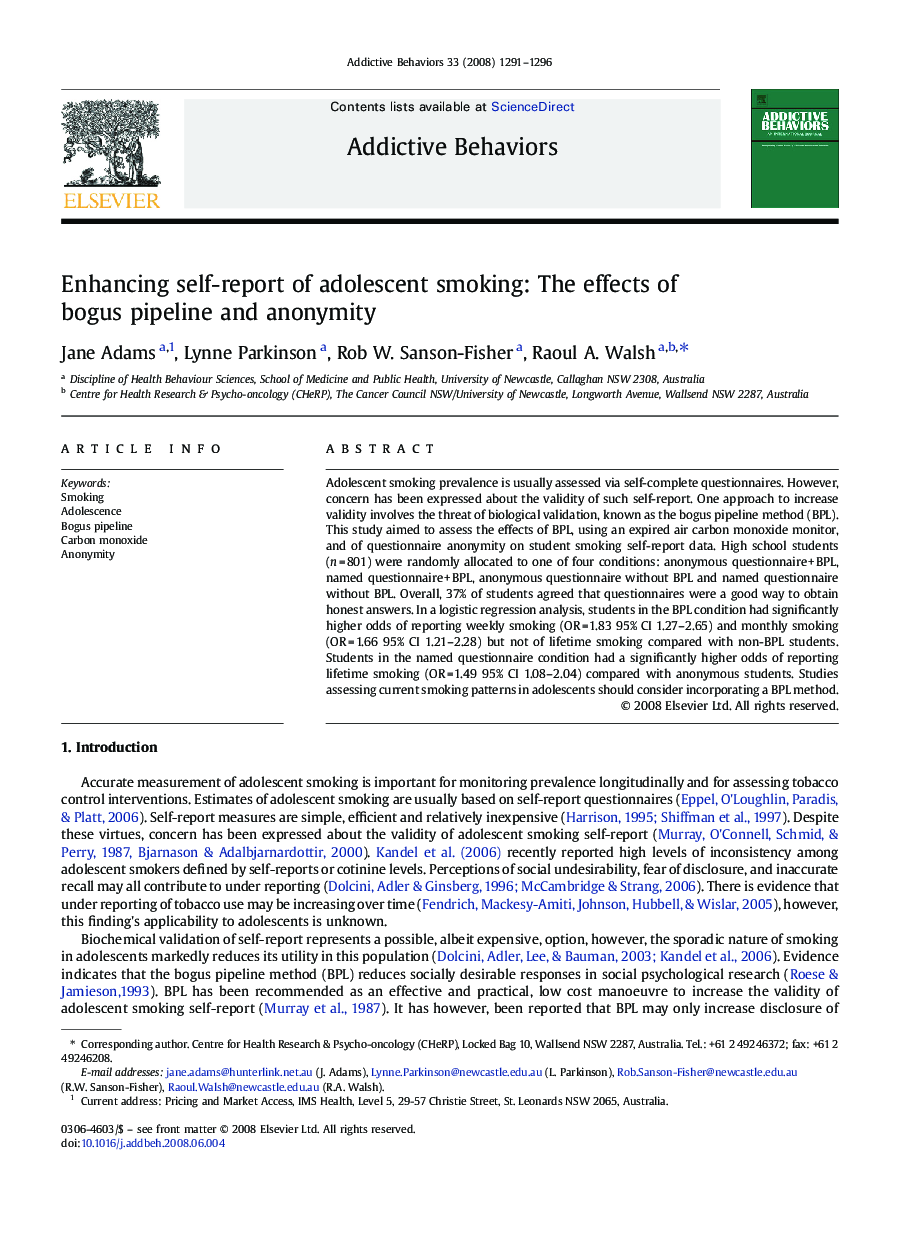| Article ID | Journal | Published Year | Pages | File Type |
|---|---|---|---|---|
| 899705 | Addictive Behaviors | 2008 | 6 Pages |
Adolescent smoking prevalence is usually assessed via self-complete questionnaires. However, concern has been expressed about the validity of such self-report. One approach to increase validity involves the threat of biological validation, known as the bogus pipeline method (BPL).This study aimed to assess the effects of BPL, using an expired air carbon monoxide monitor, and of questionnaire anonymity on student smoking self-report data. High school students (n = 801) were randomly allocated to one of four conditions: anonymous questionnaire + BPL, named questionnaire + BPL, anonymous questionnaire without BPL and named questionnaire without BPL. Overall, 37% of students agreed that questionnaires were a good way to obtain honest answers. In a logistic regression analysis, students in the BPL condition had significantly higher odds of reporting weekly smoking (OR = 1.83 95% CI 1.27–2.65) and monthly smoking (OR = 1.66 95% CI 1.21–2.28) but not of lifetime smoking compared with non-BPL students. Students in the named questionnaire condition had a significantly higher odds of reporting lifetime smoking (OR = 1.49 95% CI 1.08–2.04) compared with anonymous students. Studies assessing current smoking patterns in adolescents should consider incorporating a BPL method.
